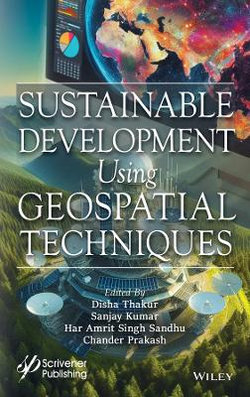Geospatial technology (GT) is a combination of geographic information systems (GIS), remote sensing (RS), and the global position system (GPS) for the mapping, visualization, and analysis of natural resource planning. Nowadays, GIS is widely used throughout the globe for a wide range of applications. GIS is a system that combines locations, geography, hardware, software, statistics, planning, and digital mapping. GIS is a system in which one can store, manipulate, analyze, and visualize or display spatial data. The basic components of GIS are hardware, software, data, input, and manpower. One can develop spatial, temporal, and dynamic models using GIS, which may help in effective decision-making tools.
Geospatial information is a computer programme that collects, stores, verifies, and presents information on locations on the surface of the Earth. Geographical information systems play a key role in sustainable development. Geospatial technology combines traditional database operations like query and statistical analysis with the specific graphical and geographic analytical capabilities offered by maps.
Data on people, such as population, income, or education level, may be included in the system. It may provide details on the topography, such as where streams are and what kinds of plants and soil are present. It may also contain details regarding the locations of storm drains, roads, and electricity lines as well as companies, farms, and educational institutions. People can use GIS technology to compare the locations of various objects to determine how they connect to one another. For instance, utilizing GIS, a single map might show both polluting and pollutant-sensitive locations, such as wetlands and rivers, as well as locations that cause pollution, such industrial plants.Geospatial techniques have also been used for different aspects of renewable energy studies like assessment, consumption, demand, site selection, agriculture, etc. and in various sectors like transport, telecommunications, public utilities, healthcare, and environmental design for sustainable development. Thus, geospatial techniques are essential tools for designing and implementing sustainable processes at scale. People around the world continue to compile scientific data about resources, ecosystems, and human impact. These techniques enable us to visualize and analyze these massive collections of data.




Share This Book: